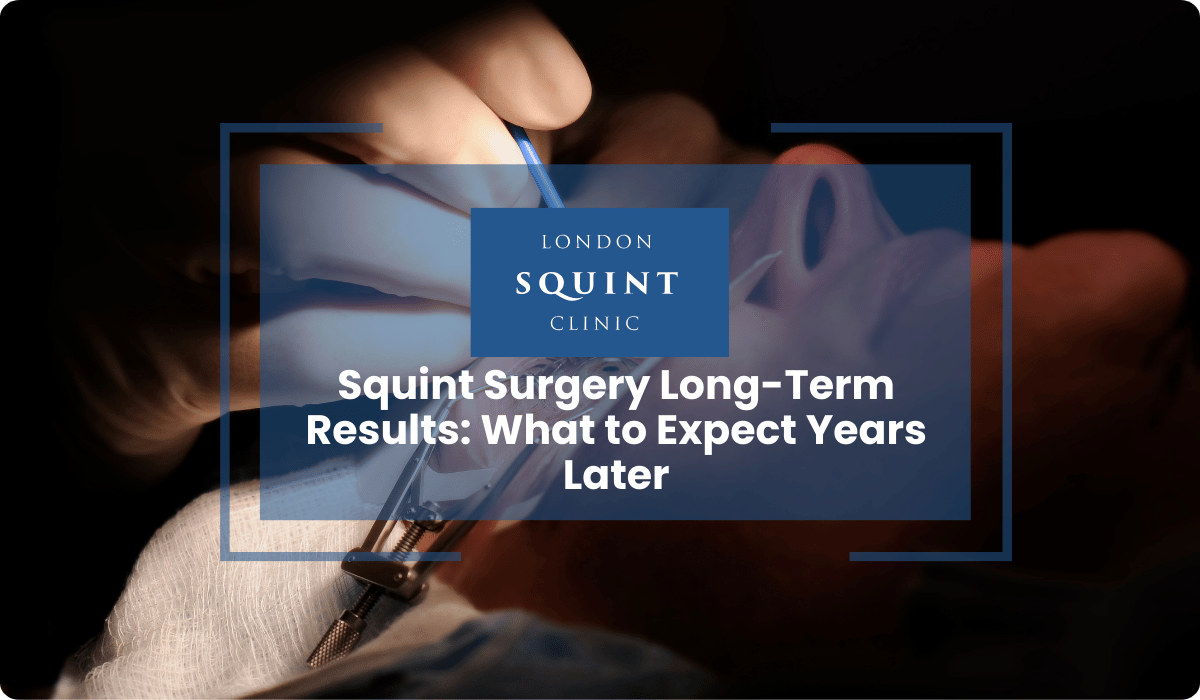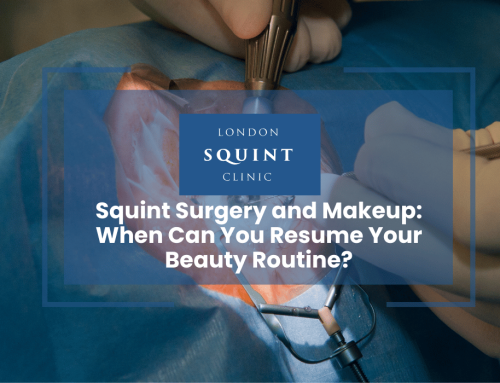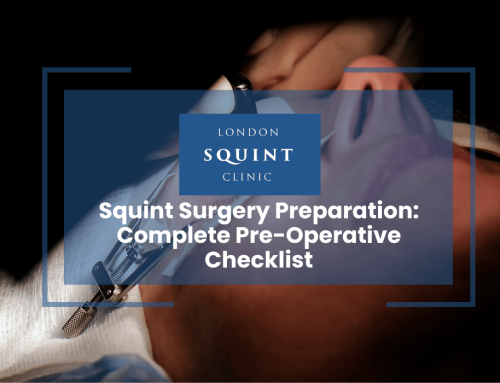Squint Surgery Long-Term Results: What to Expect Years Later
Maximizing Long-Term Success After Squint Surgery
- Squint surgery results are generally long-lasting, with many patients maintaining good eye alignment for years after the procedure.
- Factors such as the type and severity of the original squint, age at the time of surgery, and underlying conditions can influence the longevity of surgical outcomes.
- Regular follow-up care and monitoring are crucial for identifying and addressing any changes in eye alignment promptly.
- Performing targeted eye exercises as prescribed by an orthoptist can help strengthen eye muscles, improve binocular vision, and promote stable alignment over time.
- Patients can optimize long-term success by adhering to post-operative care instructions, attending follow-up appointments, maintaining good eye health, and protecting the eyes from strain or injury.
Here is the blog post content with the specified sections and formatting:
Table of Contents
- Understanding the Durability of Squint Surgery Results
- Factors Influencing Long-Term Outcomes After Squint Correction
- How Long Do the Effects of Squint Surgery Typically Last?
- Potential Need for Additional Surgeries in the Future
- Importance of Regular Follow-Up Care and Monitoring
- Maintaining Optimal Eye Alignment Through Targeted Exercises
- Addressing Common Concerns About Long-Term Squint Surgery Results
- Ensuring Lasting Success: Tips for Maximizing Squint Correction Benefits
Understanding the Durability of Squint Surgery Results
When considering squint surgery, one of the most common questions patients have is about the long-term durability of the results. While squint correction procedures aim to provide lasting improvements in eye alignment, it’s important to understand that individual outcomes can vary. In most cases, the results of squint surgery are indeed long-lasting, with many patients enjoying stable eye alignment for years or even decades after their procedure. However, several factors can influence the longevity of the surgical outcomes, and it’s crucial for patients to have realistic expectations and a clear understanding of the potential need for ongoing care and monitoring.
Factors Influencing Long-Term Outcomes After Squint Correction
Several key factors can impact the long-term success and stability of squint surgery results. These include the type and severity of the original squint, the patient’s age at the time of surgery, and the presence of any underlying conditions that may affect eye alignment or visual development. In some cases, the eyes may have a tendency to drift back towards their original position over time, especially if the squint was particularly severe or long-standing prior to surgery. Additionally, the healing process and individual response to surgery can vary from patient to patient, which can also influence the durability of the results.
How Long Do the Effects of Squint Surgery Typically Last?
In the majority of cases, the effects of squint surgery are long-lasting, with many patients maintaining good eye alignment for years after their procedure. Studies have shown that the success rates for squint correction remain high over the long term, with most patients experiencing significant improvements in both the cosmetic appearance of their eyes and their binocular vision. However, it’s important to note that some patients may require additional surgeries or ongoing management to maintain optimal results, especially if their squint was severe or if they have other underlying eye conditions that can impact alignment.
Potential Need for Additional Surgeries in the Future
While the goal of squint surgery is to provide long-term correction of eye misalignment, there are situations where additional surgeries may be necessary in the future. This can occur if the eyes begin to drift back towards their original position over time, or if the patient experiences changes in their vision or eye alignment due to other factors such as aging or the development of new eye conditions. In some cases, touch-up procedures may be recommended to fine-tune the alignment and maintain optimal results. It’s important for patients to be aware of this possibility and to work closely with their eye care team to monitor their alignment and address any changes promptly.
Importance of Regular Follow-Up Care and Monitoring
To ensure the best possible long-term outcomes after squint surgery, regular follow-up care and monitoring are essential. This typically involves scheduled check-ups with your eye surgeon or orthoptist to assess your eye alignment, vision, and overall eye health. These visits allow your care team to identify any changes or issues early on and intervene promptly if needed. They can also provide guidance on exercises, treatments, or management strategies to help maintain good alignment and prevent recurrence of the squint. Patients should commit to attending these follow-up appointments as recommended to optimize their long-term results and address any concerns proactively.
Maintaining Optimal Eye Alignment Through Targeted Exercises
In addition to regular follow-up care, patients can play an active role in maintaining their eye alignment after squint surgery by performing targeted exercises as directed by their eye care team. These exercises, often prescribed by orthoptists, are designed to help strengthen the eye muscles, improve binocular vision, and promote stable alignment over time. Common exercises may include focusing techniques, convergence training, or the use of specialized prisms or lenses. Consistently performing these exercises can help reinforce the surgical corrections and minimize the risk of regression or recurrence of the squint.
Addressing Common Concerns About Long-Term Squint Surgery Results
It’s natural for patients to have concerns and questions about the long-term outcomes of squint surgery. Some common worries include the possibility of the squint recurring, the potential need for additional surgeries, and the impact on vision development, particularly in children. It’s important to discuss these concerns openly with your eye surgeon, who can provide personalized guidance based on your specific case. They can offer reassurance about the generally high success rates of squint surgery and explain the steps that can be taken to minimize the risk of recurrence or complications. By addressing these concerns proactively, patients can feel more confident and informed about their long-term prognosis.
Ensuring Lasting Success: Tips for Maximizing Squint Correction Benefits
To optimize the long-term success of squint surgery, patients can take several proactive steps. These include adhering to their post-operative care instructions carefully, attending all scheduled follow-up appointments, and performing any prescribed exercises diligently. Maintaining good overall eye health through regular eye exams, wearing corrective lenses as needed, and protecting the eyes from strain or injury can also contribute to stable alignment over time. For children, early intervention and close monitoring of vision development are particularly crucial, as untreated squints can lead to amblyopia or other vision problems if not addressed promptly. By working closely with their eye care team and taking a proactive approach to their eye health, patients can maximize the long-term benefits of their squint correction surgery.
Frequently Asked Questions
How long does squint surgery correction typically last?
In most cases, the effects of squint surgery are long-lasting, with many patients maintaining good eye alignment for years after their procedure. Studies have shown that the success rates for squint correction remain high over the long term, with most patients experiencing significant improvements in both the cosmetic appearance of their eyes and their binocular vision.
Can a squint come back after surgery?
While the goal of squint surgery is to provide long-term correction of eye misalignment, there are situations where the squint may recur. This can happen if the eyes begin to drift back towards their original position over time, or if the patient experiences changes in their vision or eye alignment due to other factors such as aging or the development of new eye conditions.
Will I need additional surgeries in the future after squint correction?
In some cases, additional surgeries may be necessary to maintain optimal eye alignment after the initial squint correction procedure. This can occur if the eyes begin to drift back towards their original position over time, or if the patient experiences changes in their vision or eye alignment. Touch-up procedures may be recommended to fine-tune the alignment and maintain the best possible results.
What can I do to ensure the best long-term results after squint surgery?
To ensure the best possible long-term outcomes after squint surgery, patients should attend regular follow-up appointments with their eye surgeon or orthoptist, perform any prescribed eye exercises diligently, and maintain good overall eye health. This includes wearing corrective lenses as needed, protecting the eyes from strain or injury, and addressing any changes or concerns promptly with their eye care team.
How important is follow-up care after squint surgery?
Regular follow-up care and monitoring are essential for ensuring the best possible long-term outcomes after squint surgery. These scheduled check-ups allow your eye care team to assess your eye alignment, vision, and overall eye health, identify any changes or issues early on, and intervene promptly if needed. Patients should commit to attending these follow-up appointments as recommended to optimize their long-term results and address any concerns proactively.
Can eye exercises help maintain alignment after squint surgery?
Yes, targeted eye exercises prescribed by an orthoptist can play a crucial role in maintaining optimal eye alignment after squint surgery. These exercises help strengthen the eye muscles, improve binocular vision, and promote stable alignment over time. Consistently performing these exercises as directed can help reinforce the surgical corrections and minimize the risk of regression or recurrence of the squint.
Find out if you are suitable for Double Vision Treatment
Not everyone is eligible for double vision surgery.
Find out if you could benefit from this life-changing surgery by taking the quick self-suitability quiz below:
Our most popular procedures

Hello, I’m Nadeem Ali
I’m one of the few eye surgeons in the world with 100% focus on Squint and Double Vision Surgery.
I have 24 years of eye surgery experience, and worked for 13 years as a Consultant at London’s renowned Moorfields Eye Hospital.
In 2023, I left the NHS to focus fully on treating patients from across the world at the London Squint Clinic. You can read more about me here.
There’s lots of information on the website about: squint surgery, double vision surgery and our pricing.
The most rewarding part of my job is hearing patients tell me how squint or double vision surgery has changed their lives. You can hear these stories here.
Mr Nadeem Ali
MA MB BChir MRCOphth FRCSEd(Ophth)





